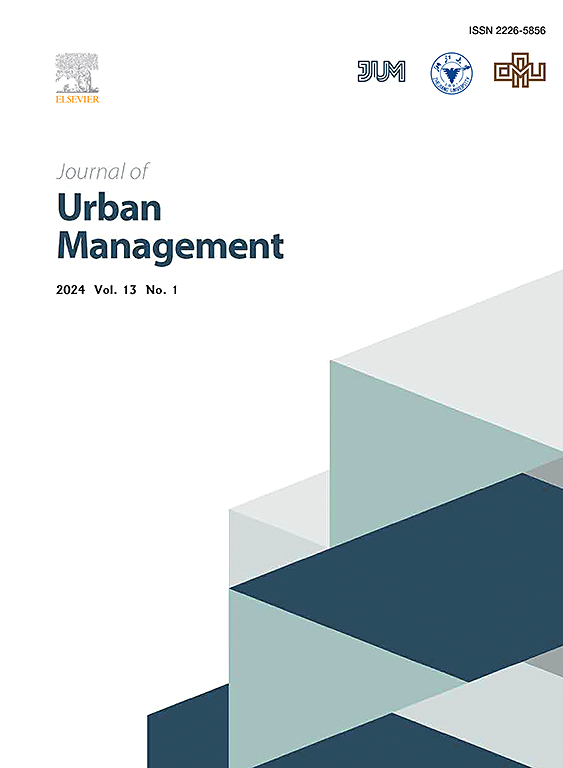Urban climate simulation model to support climate-sensitive planning decision making at local scale
IF 5
2区 社会学
Q1 URBAN STUDIES
引用次数: 0
Abstract
Urban planning, through design and land use allocation, affects urban climate dynamics and patterns at different atmospheric layers and spatial scales. Climate sensitive planning and design draws attention to the consideration of climate parameters for decision making. Seeking to contribute to the above, this research set out to identify the effect of urban design features (e.g., vegetation cover and construction density) on air temperature behavior. We conducted a case study, selected the Renca municipality located north-west Santiago, Chile, which represents a Mediterranean urban area affected by an intense daytime and nighttime urban heat island (UHI). We developed simple linear regression models to estimate air temperature per block in four different present and future scenarios: summer and winter and for day (16:00) and night (23:00). The urban-environmental variables were evaluated with the air temperature data series, measured in 21 points in the commune which were representative of urban and natural local climatic zones (LCZ). The results were evaluated and validated. We observed that variables such as vegetation, surface temperature or relative humidity are important explanatory factors for air temperature at the block scale in Renca across all four models. Models represent a tool that allows the evaluation of different design and urban planning alternatives at the scale of a city block, providing useful information for climate-sensitive decision-making.
支持地方尺度气候敏感规划决策的城市气候模拟模型
城市规划通过设计和土地利用分配,在不同的大气层和空间尺度上影响城市气候动态和格局。气候敏感规划和设计引起了对气候参数决策的关注。为了对上述问题有所贡献,本研究着手确定城市设计特征(如植被覆盖和建筑密度)对气温行为的影响。我们进行了一个案例研究,选择了位于智利圣地亚哥西北部的Renca市,它代表了一个受强烈的白天和夜间城市热岛(UHI)影响的地中海城市地区。我们开发了简单的线性回归模型来估计四种不同的现在和未来情景下每个街区的气温:夏季和冬季,白天(16:00)和晚上(23:00)。利用具有城市气候带和自然局地气候带代表性的21个点的气温数据序列对城市环境变量进行了评价。对结果进行了评价和验证。我们发现植被、地表温度或相对湿度等变量都是伦卡地区块尺度气温的重要解释因子。模型是一种工具,可以在城市街区的尺度上评估不同的设计和城市规划备选方案,为气候敏感型决策提供有用的信息。
本文章由计算机程序翻译,如有差异,请以英文原文为准。
求助全文
约1分钟内获得全文
求助全文
来源期刊

Journal of Urban Management
URBAN STUDIES-
CiteScore
9.50
自引率
4.90%
发文量
45
审稿时长
65 days
期刊介绍:
Journal of Urban Management (JUM) is the Official Journal of Zhejiang University and the Chinese Association of Urban Management, an international, peer-reviewed open access journal covering planning, administering, regulating, and governing urban complexity.
JUM has its two-fold aims set to integrate the studies across fields in urban planning and management, as well as to provide a more holistic perspective on problem solving.
1) Explore innovative management skills for taming thorny problems that arise with global urbanization
2) Provide a platform to deal with urban affairs whose solutions must be looked at from an interdisciplinary perspective.
 求助内容:
求助内容: 应助结果提醒方式:
应助结果提醒方式:


